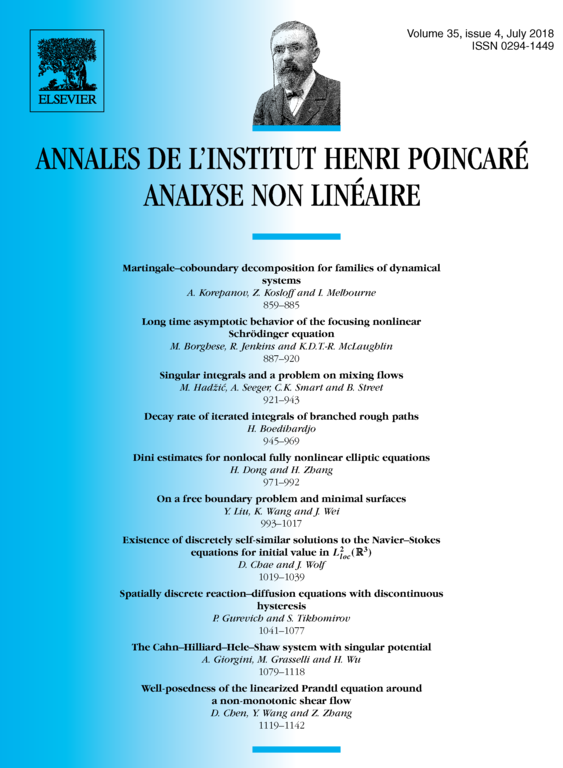The Cahn–Hilliard–Hele–Shaw system with singular potential
Andrea Giorgini
Dipartimento di Matematica, Politecnico di Milano, Milano 20133, ItalyMaurizio Grasselli
Dipartimento di Matematica, Politecnico di Milano, Milano 20133, ItalyHao Wu
School of Mathematical Sciences and Shanghai Key Laboratory for Contemporary Applied Mathematics, Fudan University, Shanghai 200433, China

Abstract
The Cahn–Hilliard–Hele–Shaw system is a fundamental diffuse-interface model for an incompressible binary fluid confined in a Hele–Shaw cell. It consists of a convective Cahn–Hilliard equation in which the velocity is subject to a Korteweg force through Darcy's equation. In this paper, we aim to investigate the system with a physically relevant potential (i.e., of logarithmic type). This choice ensures that the (relative) concentration difference takes values within the admissible range. To the best of our knowledge, essentially all the available contributions in the literature are concerned with a regular approximation of the singular potential. Here we first prove the existence of a global weak solution with finite energy that satisfies an energy dissipative property. Then, in dimension two, we further obtain the uniqueness and regularity of global weak solutions. In particular, we show that any two-dimensional weak solution satisfies the so-called strict separation property, namely, if is not a pure state at some initial time, then it stays instantaneously away from the pure states. When the spatial dimension is three, we prove the existence of a unique global strong solution, provided that the initial datum is regular enough and sufficiently close to any local minimizer of the free energy. This also yields the local Lyapunov stability of the local minimizer itself. Finally, we prove that under suitable assumptions any global solution converges to a single equilibrium as time goes to infinity.
Cite this article
Andrea Giorgini, Maurizio Grasselli, Hao Wu, The Cahn–Hilliard–Hele–Shaw system with singular potential. Ann. Inst. H. Poincaré Anal. Non Linéaire 35 (2018), no. 4, pp. 1079–1118
DOI 10.1016/J.ANIHPC.2017.10.002